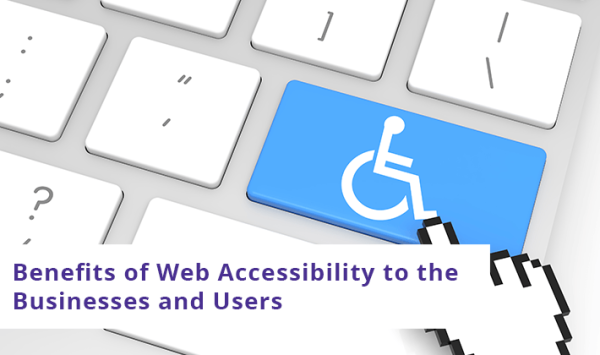In today’s digital world, websites are essential for businesses of all sizes. They provide a way to connect with customers, promote products and services, and build brand awareness. But for people with disabilities, websites can be inaccessible. This means that they may not be able to use the website at all, or they may have difficulty navigating and using it.
Website accessibility is the practice of designing and developing websites so that they can be used by people with disabilities. This includes people who are blind, deaf, have low vision, have difficulty using a keyboard or mouse, or have other disabilities.
If you are unsure about how web accessibility can be beneficial for your business and users you must read this article.
Benefits of Web Accessibility: How it Helps Businesses?
There are many benefits to website accessibility. For businesses, it can help with:
- Improving SEO Performance
Many web accessibility practices, such as providing alt text for images and using headers correctly, also improve SEO. Search engines can more easily understand and index your content, potentially leading to higher rankings in search results.
- Reducing Legal Risk
With the rise in web accessibility lawsuits in recent years, ensuring your website is accessible can help protect your business from costly legal complications.
- Building a Positive Brand Image
By prioritizing web accessibility, you’re showing that your business values inclusivity and equality. This can enhance your brand’s reputation and resonate with socially conscious consumers.
- Boosting Conversion Rates
An accessible website is easier to use, which can lead to increased customer satisfaction and higher conversion rates. If users can easily navigate your website and understand your content, they’re more likely to make a purchase.
How Web Accessibility Is Helpful for Users?
For users, website accessibility can help with:
- Expanding Your Audience
By making your website accessible, you’re opening your doors to a wider audience. According to the World Health Organization, over a billion people, or about 15% of the world’s population, have some form of disability. By ensuring your website is accessible, you’re reaching out to this significant demographic, potentially increasing your customer base.
- Enhancing User Experience
Web accessibility practices often align with general best practices for web design, such as clarity.
Techniques to Make the Website Accessible
There are many ways to make a website accessible. Some common techniques include:
- Using high-contrast colors and fonts.
- Providing text alternatives for images and videos.
- Making sure that all content can be navigated using a keyboard.
- Providing transcripts for audio and video content.
Conclusion
Website accessibility is an important issue that businesses and users should be aware of. By making websites accessible, we can help to ensure that everyone has the opportunity to participate in the digital world. To make your website accessible you can contact us. We have certified accessible testers who will audit your website and make your website and digital documents accessible.





